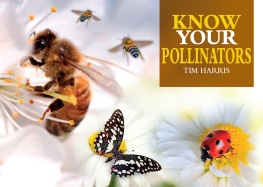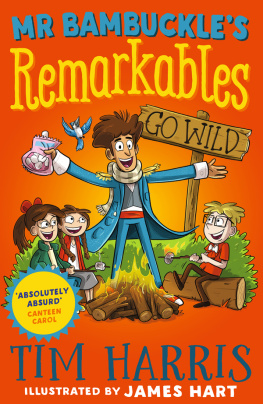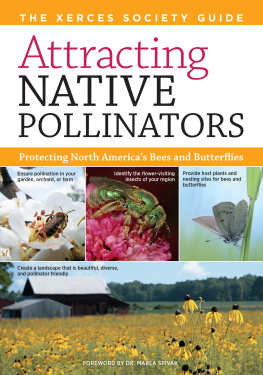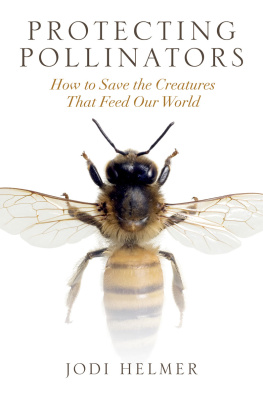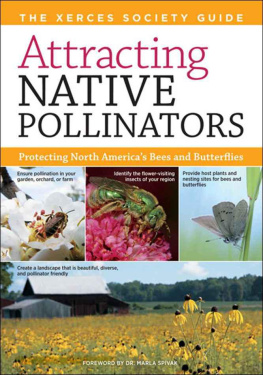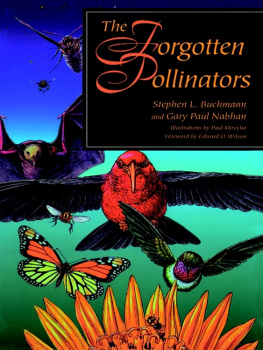Harris Tim - Know Your Pollinators
Here you can read online Harris Tim - Know Your Pollinators full text of the book (entire story) in english for free. Download pdf and epub, get meaning, cover and reviews about this ebook. year: 2020, publisher: Fox Chapel Publishing, genre: Detective and thriller. Description of the work, (preface) as well as reviews are available. Best literature library LitArk.com created for fans of good reading and offers a wide selection of genres:
Romance novel
Science fiction
Adventure
Detective
Science
History
Home and family
Prose
Art
Politics
Computer
Non-fiction
Religion
Business
Children
Humor
Choose a favorite category and find really read worthwhile books. Enjoy immersion in the world of imagination, feel the emotions of the characters or learn something new for yourself, make an fascinating discovery.
- Book:Know Your Pollinators
- Author:
- Publisher:Fox Chapel Publishing
- Genre:
- Year:2020
- Rating:5 / 5
- Favourites:Add to favourites
- Your mark:
- 100
- 1
- 2
- 3
- 4
- 5
Know Your Pollinators: summary, description and annotation
We offer to read an annotation, description, summary or preface (depends on what the author of the book "Know Your Pollinators" wrote himself). If you haven't found the necessary information about the book — write in the comments, we will try to find it.
Know Your Pollinators — read online for free the complete book (whole text) full work
Below is the text of the book, divided by pages. System saving the place of the last page read, allows you to conveniently read the book "Know Your Pollinators" online for free, without having to search again every time where you left off. Put a bookmark, and you can go to the page where you finished reading at any time.
Font size:
Interval:
Bookmark:


Know Your Pollinators
Old Pond Publishing is an imprint of Fox Chapel Publishers International Ltd.
Edited by D&N Publishing, Wiltshire, UK
Copyright 2020 by Tim Harris and Fox Chapel Publishers International Ltd.
All rights reserved. No part of this book may be reproduced, stored in a retrieval system, or transmitted in any form or by any means, electronic, mechanical, photocopying, recording, or otherwise, without the prior written permission of Fox Chapel Publishers, except for the inclusion of brief quotations in an acknowledged review.
ISBN 978-1-912158-55-3 (paperback)
978-1-913618-07-0 (ebook)
A catalogue record for this book is available from the British Library.
Fox Chapel Publishing, 903 Square Street, Mount Joy, PA 17552, U.S.A.
Fox Chapel Publishers International Ltd., 7 Danefield Road, Selsey (Chichester), West Sussex PO20 9DA, U.K.
www.oldpond.com
Front cover photos, from left to right: Honeybee, lime butterfly, and seven-spotted ladybug.
Back cover photos, from left to right: Bumblebee, seven-spotted ladybug, painted lady, and hornet mimic hoverfly.

Monarch butterfly (Danaus plexippus) on thistle.
The primary way in which plants create new generations is by producing seeds containing all the genetic information necessary to grow a new plant. Seeds are made when pollen is transferred from the stamen of one plant to the stigma of another, fertilizing it. This may be done by the wind, by water, or by animals. The animals responsible for this incredibly important transfer are called pollinators. They include bats and hummingbirds, but it is the insect pollinators that are the subject of this book: bees, butterflies, moths, hoverflies, and beetles. As well as being real heroes of the natural world, all are beautiful in their own way, and many can be attracted to your garden or backyard.

Buff-tailed bumblebee (Bombus terrestris) covered with pollen.
Bees are pollinators par excellence. More than 20,000 different kinds are known. Most visit flowers to suck up energy-giving nectar. Pollenessential for the raising of youngattaches to a bees body as it moves from plant to plant. Some are more efficient pollen collectors than others. For example, hairy bumblebees have pollen-gathering brushes on various parts of their bodies. In moving from plant to plant, bees transfer pollen from the stamen of one flower to the stigma of the next, enabling pollination. Most of the pollen is taken back to the colony or the nest burrow to feed young bees.
The range of bee lifestyles is truly bewildering. In social species such as honeybees, female workers perform most of a colonys important functions. There is a clear differentiation between breeding queens, nonbreeding workers, and male drones. The workers make honey from nectar, pollen, and enzymes produced in their stomach, and this provides food during the winter, when nectar and pollen are unavailable.
Most bees are solitary, however, with a single female establishing a nest and laying eggs. And still more bees are kleptoparasites, breaking into the nests of other bees to lay their own eggs inside. Closely related, wasps are predatory insects but since they also visit flowers, they are pollinators too.
Characteristics
Length: Queen 0.71 in (18 mm); worker and male 0.510.55 in (1314 mm).
Flight season: MayOctober.
Nectar sources: Very varied.
Habitat: Meadows, farmland, parks, gardens.

The large, furry, European bumblebee is a familiar sight as it forages on garden flowers. It can be identified by two orange collars on a black background, one near the neck and one on the abdomen. The tip of the abdomen is buff in queens and males, but whitish in workers.
After emerging from hibernation in spring, a queen will start foraging busily on flowers such as sallows, plums, cherries, and gorseand she will pick an underground site for a new colony, often an old mouse nest. Once settled, she lays eggs, which hatch into larvae. When it reaches its peak, there may be more than 500 bees in a colony, most of them workers (all females), which perform most of its important functions: foraging for food at flowers as varied as knapweeds, daisies, lavender, deadnettles, and ivy, according to the season. The workers also defend the nest from attackers and care for the larvae. Male bees, or drones, hatch from unfertilized eggs; they leave the colony when they reach adulthood to go in search of a mate, their only function.
Characteristics
Length: Queen 0.670.82 in (1721 mm); worker and male 0.390.67 in (1017 mm).
Flight season: AprilNovember.
Nectar sources: Very varied.
Habitat: Forest, farmland, parks, gardens.

This is one of North Americas most important pollinators. Abundant in the east, it is now used for greenhouse pollination in California and Mexico, far outside its natural range. It is a social insect. Workers fly from flower to flower to collect pollen; goldenrods are particularly popular nectar sources, along with thistles, apples, clovers, vetches, burdocks, rhododendrons, and tomatoes. Some pollen becomes attached to the bees hairy bodies and some is collected in pollen baskets on the legs. The workers take it back to the underground nest, which typically houses 300500 bees.
Eastern bumblebees are mostly covered in black hairs, with a band of yellow on the thorax and another on the first segment of the abdomen. Queens emerge from hibernation in March or April and fly in search of sites for new colonies, which are typically established in May. Each queen lays around 2,000 eggs in a season, about half of them surviving to adulthood. Female workers emerge in June, then the males and new queens appear in August and September. In late fall, the old queen and the workers die, as do the males, although not before mating with the next generation of queens.
Characteristics
Length: Queen 0.820.90 in (2123 mm); worker and male 0.390.75 in (1019 mm).
Flight season: AprilSeptember.
Nectar sources: Very varied.
Font size:
Interval:
Bookmark:
Similar books «Know Your Pollinators»
Look at similar books to Know Your Pollinators. We have selected literature similar in name and meaning in the hope of providing readers with more options to find new, interesting, not yet read works.
Discussion, reviews of the book Know Your Pollinators and just readers' own opinions. Leave your comments, write what you think about the work, its meaning or the main characters. Specify what exactly you liked and what you didn't like, and why you think so.

